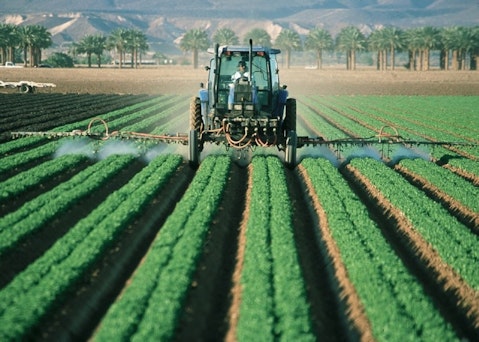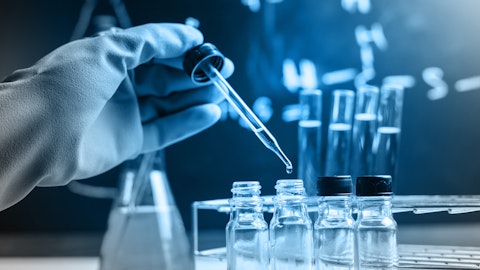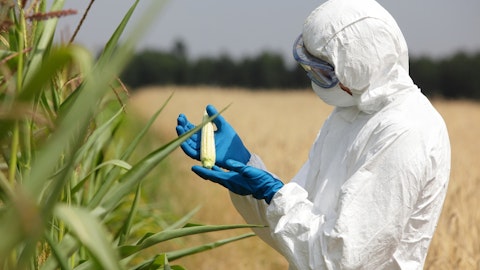For years, there have been discussions regarding the future food needs, as the population is expected to reach 9 billion by 2050, which means that we will need to grow 50% more food to satisfy the demand. At the same time, expanding agricultural production has many downsides, since many countries employ agricultural practices from the last century, which in turn has a negative impact on the climate change. Through emissions of greenhouse gases and the deforestation for the conversion of land for agricultural use, agriculture is estimated to contribute to over 20% to global annual emissions. In turn, climate change is affecting crop production in low latitude countries. So, the world is stuck in a vicious cycle.
However, there is some light at the end of the tunnel, since many developed countries managed to significantly increase their agricultural production and use less land and labor. For example, in the US, agricultural production surged by over 160% since the middle of the 20th century. These results were achieved mainly through innovations and technological advancement that includes seeds, crop-protection, chemicals and farm equipment.
When it comes to seeds and crop protection, the industry is dominated by a handful of companies, which have a global reach and amass the largest part of the $100 billion seeds and agricultural chemicals industry. In the last couple of years, the industry has gone through a great consolidation phase, with several mega-mergers aimed to solidify the leading position of the big companies. Dow Chemical and DuPont Co. merged last year and the created company DowDuPont Inc (NYSE:DWDP) is currently working on splitting into three companies, one of which will be Corteva Agriscience and will incorporate the agricultural division of DowDuPont. At the beginning of 2018, Potash Corp of Saskatchewan and Agrium completed their merger and formed Nutrien Ltd (NYSE:NTR). German-based Bayer has recently received the approval from the US Justice Department to acquire Monsanto Company (NYSE:MON). Also last year, China National Chemical Corp. bought Syngenta in a $43 billion deal, the largest takeover made by a Chinese state-owned enterprise so far.

Pixabay/Public Domain
While the M&A activity in the agrochemical industry will allow companies to combine their research efforts and help farmers produce more efficient crops, there is also the risk that the global agricultural industry will be too dependent on a bunch of enterprises, which could create an oligopoly. Smaller farmers might get squeezed out as they won’t have alternatives and might not be able to buy seeds from big players.
In addition, as these companies dominate the market, they might push for genetically-modified seeds that can grow only with the help of chemicals that they also make. On the other hand, mergers are often appreciated by economists since they create the economies of scale that accelerate technological advancement and lower costs, which should be transferred to farmers and then to consumers. In the end, the consolidation in the seed and agricultural chemical industry is about efficiency versus choice.
Leaving aside the impact of mergers in the seed and agrochemical industry on the farm economy, it is clear that these deals will increase the shareholder value of companies through higher revenue and lower costs. Big players in the industry are looking at great fundamental catalysts and since agriculture has been around for thousands of years and will still be around for a long time, it’s worth considering adding some seed and agricultural chemical companies to your portfolio. To simplify your research we have selected some suggestions based on their hedge fund sentiment. We believe that the consensus picks among hedge funds can help smaller investors outperform the market. We use consensus picks among best-performing hedge funds as part of our own strategy, which has returned over 74% since May 2014 and outperformed the broader market by more than 20 percentage points. In addition to taking a look at the favorite seed and agrochemical companies that we will discuss on the next page, you can take a look at the most recent picks from our strategy by accessing our newsletters free of charge for 14 days.
In DowDuPont Inc (NYSE:DWDP), there were 82 funds long the stock at the end of 2017, up by 10 funds over the quarter. Since the beginning of the year, DowDuPont Inc (NYSE:DWDP)’s stock is down by 8%, taking a dive at the beginning of February following the release of fourth-quarter earnings, even though the company posted both revenue and EPS figures above the consensus estimates. In addition, DowDuPont Inc (NYSE:DWDP) reported annual cost synergy run-rate of more than $800 million and $200 million of realized savings, and raised its cost synergy commitment to $3.30 billion from $3.0 billion. Later in February, DowDuPont Inc (NYSE:DWDP) announced the new brand names for the three independent companies it plans to create. The specialty products division will become the new DuPont, while the materials science will be called Dow. The agriculture company, as we have mentioned earlier, will be named Corteva Agriscience. DowDuPont Inc (NYSE:DWDP) plans to complete the spin-off of the materials science division by the end of March 2019, while agriculture and specialty products segments are expected to be separated by June 1, 2019. DowDuPont Inc (NYSE:DWDP) might also be affected by the recent tariffs that China has launched as a response to a similar move made by the United States. The tariffs affect many agricultural products, including soybeans, which are the top US agricultural export to China. Soybean seeds and chemicals for the protection of soybean crops are among DowDuPont Inc (NYSE:DWDP)’s product lines.
Follow Dupont De Nemours Inc. (NYSE:DD)
Follow Dupont De Nemours Inc. (NYSE:DD)
Receive real-time insider trading and news alerts
Then there’s Monsanto Company (NYSE:MON), which saw the number of investors from our database long its stock decline by eight to 72 during the fourth quarter. Earlier this month, Monsanto Company (NYSE:MON) reported its financial results for the fiscal second quarter. Both EPS of $3.22 and Revenue of $5.02 billion, missed the consensus estimates by $0.09 and $320 million, respectively, due to lower volumes and prices for corn. The company said that its Seeds and Genomics sales inched down by 2.3% on the year to $4.09 billion, significantly lower than analyst expectations of $4.32 billion, with corn seeds and traits sales falling by 6.2% to $2.72 billion, but sales of soybean seeds and traits increased by 6% to $912 million. Lower corn sales were offset by improved prices of glyphosate, a broad-spectrum herbicide. Mosanto Company (NYSE:MON) expects revenue growth to come from higher glyphosate pricing this year and the adoption of new technologies in Seeds and Genomics. Mosanto Company (NYSE:MON) is currently in the process of being acquired by Bayer and recently the US Justice Department gave the permission for the $62.5 billion deal that has been in the works since 2016. The approval from the DoJ is the last big hurdle for the merger and follows the approval from the European Union that companies secured in March. In its second-quarter report, Monsanto Company (NYSE:MON) said it expects the deal to close in the second calendar quarter of 2018.
Follow Monsanto Co W (NASDAQ:MON)
Follow Monsanto Co W (NASDAQ:MON)
Receive real-time insider trading and news alerts
There also are 35 funds tracked by Insider Monkey bullish on FMC Corp (NYSE:FMC) as of the end of 2017, down from 46 funds a quarter earlier. As a large chemical company, FMC Corp (NYSE:FMC) has a division for crop protection, which a year ago it expanded by acquiring a portion of DuPont’s Crop Protection business that the latter had to divest in order to comply with the European Commission’s ruling regarding the merger between DuPont and Dow Chemical. FMC Corp (NYSE:FMC) is one of the top global crop protection companies with a broad portfolio of Insecticides, Herbicides, Fungicide, and other products, and almost $4.0 billion in annual revenue. At the end of March, FMC Corp (NYSE:FMC) said it expects first-quarter and full-year adjusted EPS to exceed the high end of its guidance ranges of $1.45 to $1.59 and $5.20 to $5.60, respectively. The results are expected to be driven by stronger earnings in both Agricultural Solutions and FMC Lithium segments. Earlier this year, the company announced plans to spin-off its lithium business in order to focus on its core agriculture segment. As part of the spin-off, FMC Corp (NYSE:FMC) plans to conduct a $500 million IPO of a 15% stake in the lithium company. The new company would allow investors to get exposure to a pure-play lithium company that should thrive as the demand for electric vehicles is soaring.
Follow Fmc Corp (NYSE:FMC)
Follow Fmc Corp (NYSE:FMC)
Receive real-time insider trading and news alerts
At the end of 2017, 31 funds were long CF Industries Holdings, Inc. (NYSE:CF), compared to 32 funds at the end of September. CF Industries Holdings, Inc. (NYSE:CF)’s stock is 11% in the red, year-to-date, amid analysts expressing concerns about the global fertilizer market. In January, Credit Suisse reiterated a cautious view of the market, saying that the market will be driven by supply this year, which could result in volatile pricing. However, analysts at Credit Suisse also believe that CF Industries Holdings, Inc. (NYSE:CF) should see solid cash margins generated at its fertilizer segment due to its cost-advantaged position. In March, Citigroup downgraded CF Industries Holdings, Inc. (NYSE:CF)’s stock to ‘Neutral’ from ‘Buy’ and cut the price target to $45 from $47, citing the strong performance of the stock over the past year and saying that the stock might not continue the same outperformance given falling urea prices. However, in the long-run, Citi analysts expect to see favorable trends as urea supply growth could be below demand growth in the next couple of years. Also in March, Bank of America Merrill Lunch analysts downgraded the stock to ‘Underperform’ from ‘Buy’ and slashed the price target to $48 from $40, citing potential declines in demand for nitrogen fertilizer due to higher production rates of fertilizer in China. On the other hand, Cowen analysts upgraded fertilizer stocks, including CF Industries Holdings, Inc. (NYSE:CF) and Mosaic Co (NYSE:MOS) to ‘Outperform’ from ‘Market Perform’ and raised the price targets to $50 and $32, respectively, citing crop shortfalls in South America that might help fertilizer prices recover.
Follow Cf Industries Holdings Inc. (NYSE:CF)
Follow Cf Industries Holdings Inc. (NYSE:CF)
Receive real-time insider trading and news alerts
Even though Mosaic Co (NYSE:MOS) is the least popular stock among those covered in this article, it saw the second-highest increase in the number of bullish investors during the fourth quarter. At the end of 2017, there were 27 funds holding shares of Mosaic, up by five funds over the quarter. Moreover, during 2017, the number of investors with long positions in the company went up by 11, the largest increase among agrochemical companies. In addition to Cowen analysts that upgraded the stock in March, JP Morgan upgraded the stock to ‘Overweight’ from ‘Neutral’ and raised the price target to $30 from $26 in February. JP Morgan analysts believe that Mosaic Co (NYSE:MOS)’s reduction of phosphate production in the US and low inventories in India might create positive sector fundamentals. In addition, Mosaic Co (NYSE:MOS) delivered a strong fourth quarter, with EPS of $0.34 beating the consensus estimate of $0.29, while revenue of $2.09 billion went up by 12.4% on the year and was $180 million higher than expected.
Follow Mosaic Co (NYSE:MOS)
Follow Mosaic Co (NYSE:MOS)
Receive real-time insider trading and news alerts
Disclosure: none





